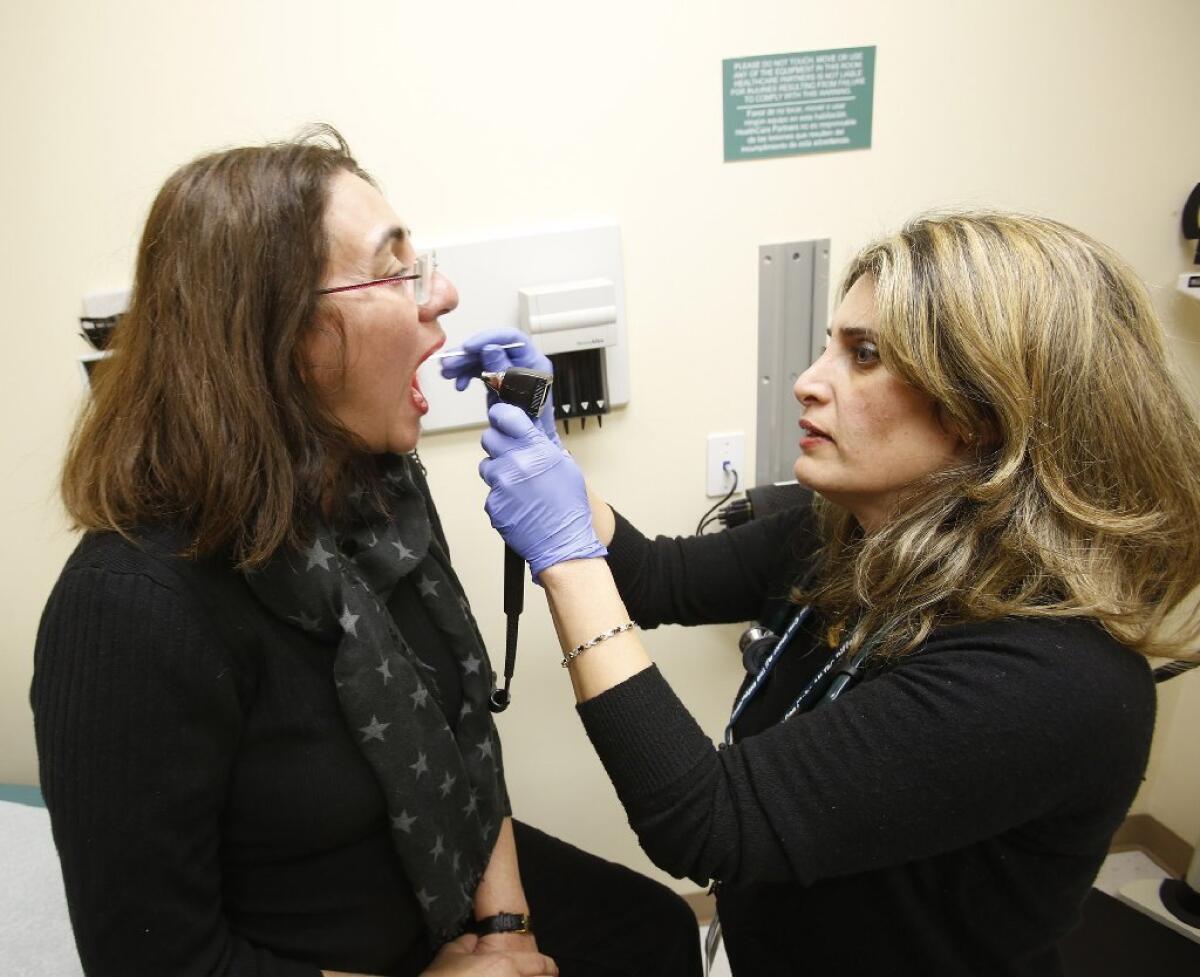Last year’s flu season wound up on the mild side, CDC says

- Share via
Another influenza season is in the books, and overall it caused less sickness and death than flu seasons in the recent past, according to a new report from the Centers for Disease Control and Prevention.
Between Sept. 29, 2013, and May 17, 2014, a total of 53,471 specimens sent to U.S. labs tested positive for a flu virus. Among them, 87% were influenza A viruses, and the most common of these were versions of the H1N1 virus that prompted the swine flu epidemic in 2009. The other 13% of the confirmed specimens were influenza B viruses.
The CDC findings, which were published Thursday in the Morbidity and Mortality Weekly Report, did not estimate a total number of flu deaths for the 2013-14 flu season. But based on records kept by doctors and hospitals, researchers concluded that flu activity in the last year resulted in “lower levels of outpatient illness and mortality” compared with years when the predominant strains were versions of the H3N2 virus.
At least 96 children died of the flu in the last year, laboratory tests confirmed. Those deaths were reported in 30 states, New York City and Chicago. In about half of these cases, the patients had at least one preexisting condition, such as a neurologic disorder or a pulmonary disease, that may have made them more vulnerable to the flu.
The most striking statistic in the report is the rate of hospitalization among people between the ages of 50 and 64. Over the course of the entire flu season, the cumulative hospitalization rate for these adults was 54.3 per 100,000 people. In the previous four years, that figure has been as low as 8.1 and it never topped 40.6.
The cumulative hospitalization rate was even higher for Americans who were at least 65 years old – 88.1 per 100,000 people. But that was well within the range in recent years (25.7 to 183.1 per 100,000 people).
Nationwide, the flu season peaked in the week that ended Dec. 28, 2013. The peak came earliest in the southeastern United States (the week that ended Dec. 7) and latest in the Northeast, excluding New England (the week that ended Jan. 25).
The H1N1 and other A viruses were the predominant flu viruses through late March. Then influenza B viruses took over, with the region encompassing New York, New Jersey, Puerto Rico and the Virgin Islands particularly hard hit.
The report noted one human case of a H3N2 virus that was first spotted in pigs in 2010 and was identified in a dozen people the following year. The new case was a child from Iowa who had direct contact with pigs. The patient fully recovered, apparently without spreading it to relatives or anyone else, according to the CDC.
Lab tests show that last year’s flu vaccine was well-chosen. Fully 99.9% of the H1N1 samples tested were “antigenetically similar” to the flu strain used in the vaccine, as were 95.3% of the H3N2 samples tested. Some vaccines also protected against just one influenza B virus, which accounted for 73% of the B viruses that circulated last year. Of those, 99.7% were “antigenetically similar” to the strain in the flu vaccine. Other vaccines also protected against a second B virus, and those were a good match as well, according to the report.
The vaccine for the 2014-15 flu season will be based on the same four viruses, the CDC said.






